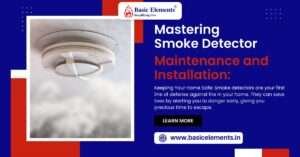A Fire Safety Audit Checklist Essential Guide in industrial settings is a crucial process that helps ensure compliance with fire safety regulations and promotes a safe working environment. It involves a thorough examination of the workplace to identify potential fire hazards, assess the effectiveness of existing fire safety measures, and recommend improvements to mitigate risks. Industrial fire safety audits typically cover various aspects such as emergency evacuation procedures, fire detection and alarm systems, firefighting equipment availability and maintenance, electrical safety measures, storage of flammable materials, and employee training on fire prevention and response.
By conducting regular Fire Safety Audit Checklist in industrial settings, organizations can proactively identify areas for improvement, enhance their overall preparedness for emergencies, and ultimately reduce the likelihood of fires occurring. Compliance with relevant regulations not only ensures the well-being of employees but also protects valuable assets and contributes to business continuity.
Key Components of a Comprehensive Fire Safety Audit Checklist
A comprehensive fire safety audit checklist typically includes key components such as:
- Fire Risk Assessment: Identifying potential fire hazards and assessing the level of risk they pose to the premises.
- Emergency Evacuation Plan: Having a clear and well-communicated plan in place to evacuate occupants safely in case of a fire emergency.
- Fire Detection Systems: Ensuring that smoke detectors, fire alarms, and other detection systems are properly installed, maintained, and functional.
- Firefighting Equipment Inspection: Regularly checking and maintaining firefighting equipment like extinguishers, sprinkler systems, hoses, etc., to ensure they are in working condition.
- Employee Training on Fire Safety: Providing training to employees on how to prevent fires, respond effectively in case of an emergency, and use firefighting equipment correctly. By including these components in a Fire Safety Audit Checklist, businesses can better protect their premises, occupants, and assets from the risks associated with fires.
Importance of Regularly Conducting Fire Safety Audits in Industries
Regularly conducting Fire Safety Audit Checklist in industries is crucial for several reasons:
1. Fire prevention measures: By conducting audits, companies can ensure that all necessary fire prevention measures are in place, such as proper storage of flammable materials, adequate fire extinguishers, and functioning smoke detectors.
2. Industrial safety standards compliance: Regular audits help businesses ensure that they are compliant with industrial safety standards and regulations related to fire safety. This can prevent legal issues and potential fines.
3. Minimizing workplace hazards: Audits identify potential hazards that could lead to fires, allowing companies to take corrective actions promptly. This helps minimize the risk of accidents and injuries in the workplace.
4. Preventing catastrophic fires: By regularly assessing and addressing Fire Safety Audit Checklist , businesses can significantly reduce the likelihood of catastrophic fires breaking out on their premises. This not only protects employees but also safeguards property and assets. In conclusion, conducting regular fire safety audits is essential for maintaining a safe work environment, complying with regulations, and preventing potentially devastating incidents from occurring in industrial settings.
Tips for Implementing an Effective Fire Safety Audit Program in Your Industry
Implementing an effective fire safety audit program in your industry is crucial for ensuring the safety of your employees and protecting your business from potential risks.
Here are some tips to help you create and maintain a robust fire safety audit program:
1. Develop comprehensive fire drill procedures: Establish clear guidelines for conducting regular fire drills, including evacuation routes, assembly points, and designated responsibilities for employees during emergencies.
2. Maintain records of audits and inspections: Keep detailed records of all fire safety audits and inspections conducted in your workplace. Document any issues identified during the audits and track the implementation of corrective actions.
3. Regularly update fire safety protocols: Fire safety protocols should be reviewed periodically to ensure they are up-to-date with current regulations and best practices. Make necessary revisions to improve the effectiveness of your fire safety program. By following these tips, you can establish a proactive approach to fire safety in your industry and create a safer work environment for everyone involved.
Common Violations Found During Fire Safety Audits and How to Address Them
During fire safety audits, some common violations found include faulty fire alarms or extinguishers, blocked emergency exits, and inadequate employee training on fire response procedures. To address these issues:
1. Faulty Fire Alarms or Extinguishers: Regular maintenance and testing of fire alarms and extinguishers are crucial to ensure they are in working order. Implement a schedule for routine inspections by qualified professionals to identify and rectify any faults promptly.
2. Blocked Emergency Exits: Keep all emergency exits clear of obstructions at all times. Educate employees about the importance of maintaining clear pathways to exits and enforce policies prohibiting the blocking of emergency exits with furniture, equipment, or other objects.
3. Inadequate Employee Training: Conduct regular training sessions for employees on fire response procedures, including how to operate firefighting equipment, evacuation routes, and assembly points. Ensure that all employees are familiar with these protocols through drills and refresher courses. By proactively addressing these common violations through proper maintenance, education, and training programs, you can significantly enhance the overall fire safety preparedness of your premises.
Conclusion: Upholding Fire Safety Standards Through Regular Audits for a Secure Working Environment
For More informative blogs Visit our website Basic Elements
Follow Us Pages : LinkedIn






